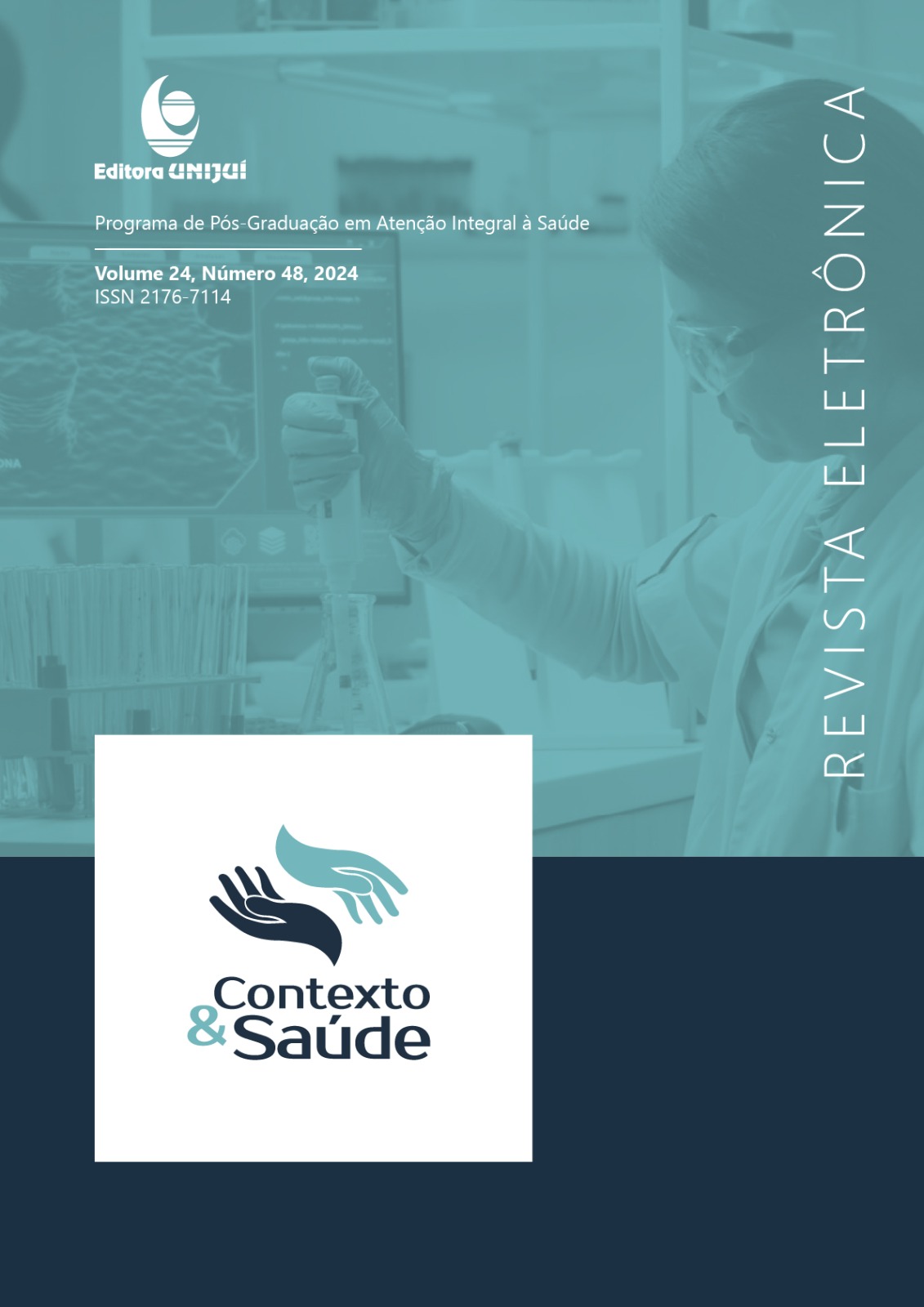Three-dimensional analysis of palate roughness as a biometric identification tool
DOI:
https://doi.org/10.21527/2176-7114.2024.48.13525Keywords:
Human Identification, Hard Palate, Forensic OdontologyAbstract
Palatal wrinkles are elevations of the oral mucosa that cover the palatine process and are located on the maxillary bone. Because its anatomy is immutable and unique to each individual, the method of human identification using palatal wrinkles has a lot of potential to become indisputable. Currently, with the incorporation of new technologies in dentistry, three-dimensional analysis of palatal wrinkles using scans has become a reality. The aim of this study was to analyze the applicability of three-dimensional analysis of palatal wrinkles for human identification, through the observation of 3D images resulting from digital scanning. This is an experimental study with a qualitative-quantitative approach, whose sample consisted of the scanning of 50 plaster models, where three-dimensional images were generated, the classifications used were with the techniques of Silva (1938), Carrea, (1937) and Bassauri (1961). The 3D scanning was done by a software system from the Zirkonzahn company, using the s600 arti scanner, and the wrinkle analysis was carried out by the Meshmixer program. When used separately, the techniques were not sufficient for individual human identification. However, the individual code generated by combining the three methods proved to be unique for each model used. Thus, the results obtained proved the applicability of three-dimensional analysis of palatal wrinkles for human identification.
References
Neves ISR, Santiago APACS, Silva MIT, Oliveira ERM. Rugoscopia palatina e seus desafios na identificação humana: uma revisão de literatura. Research, Society and development. 2021;10(5):1-11.
Brígidio JA. Rugoscopia Palatina na odontologia forense. Revista Diálogos Acadêmicos. 2018;7(1):15-19.
Silva D, Mercedes L, Andrade E, Castro M. A Importância dos arcos dentários e da rugoscopia palatina na identificação humana. J Business Techn. 2020;5(1):41-52.
Veloso CVL. Estudo rugoscópico em gêmeos monozigóticos na cidade de João Pessoa/PB. João Pessoa: Universidade Federal da Paraíba; 2017.
Barrera AS, Pacheco RAE, Quispe LRJ. Relevância de las rugas palatinas como método de identificación forense. Revista Científica Odontol. 2020;2(8):89-95.
Bósio JÁ, Del Santo M, Jacob HB. Odontologia digital contemporânea– Scanners Intraorais Digitais. Orthod. Sci. Pract. 2017;10(39):355-362.
Souza CM. Fluxo digital: uma realidade na odontologia reabilitadora. Salvador: Escola de Medicina e Saúde Pública; 2020.
Carrea JU. La Identificacion Humana Por Las Rugosidades Palatinas. RevOrthodont 1937;1(1):3-23.
Silva L. Ficha rugoscópica palatina. Brasil Odonto. 1938;14(1): 307-316.
Basauri C. Forensic Odontology and Identification. Int Crim Police Rev. 1961;16(1):45-51.
Fonseca GM, Flórez CDR. Propuesta de codificación y análisis de rugosidades palatinas para su aplicación em odontología antropológica y forense. Revista Oral. 2009;10(31): 518-523.
Castro-Silva, Silva OML, Veiga BMC. Use Of Palatine Rugoscopy As Biometric Tool: A Population Study In Niteroi, RJ, Brazil. Rev. Odontol. Unesp. 2014;3(43):203-208.
Tornavoi DC, Silva RHA. Rugoscopia palatina e a aplicabilidade na identificação humana em odontologia legal: revisão de literatura. Ética&Justiça. 2010;15(1):28-34, 2010.
Andrade FB, Mathias R, Miotto MHMB, Coutinho JS. Importância da calibração de examinadores para estudos epidemiológicos em odontologia. Vitória. 2004;6(1):16-23.
McBride GB. A proposal for strength-of-agreement criteria for Lin's Concordance Correlation Coefficient. NIWA Client Report HAM. 2005;1(1):62.
España L, Paris A, Florido R, Arteaga F, Solórzano E. Estudio de las características individualizantes de las rugas palatinas. caso: bomberos de la Universidad de Los Andes Mérida. Venezuela. Cuad Med Forense. 2010;16(4):199-204.
Arone F, Eliceni S. Características individuales de las rugas palatinas en estudiantes de la clínica odontologica de la Unsaac, Mediante la Clasificacion de Basauri, Cusco. Tesis [profesional de cirujano dentista] – Universidade Nacional de San Antonio Abad del; 2018.
Oliveira GS, Marques JAM. Uso da tecnologia de impressão tridimensional na rugoscopia palatina. RBOL. 2015;2(2):21-34.
Cardoso FL, Alberfaro KPA, Ribeiro S, Assis VKS, Reis LO. Moldagem digital em odontologia: perspectivas frente à convencional – uma revisão de literatura. II Jornada de Iniciação Científica da FACIG. 2018;3(4):1-6.
Pagano S. Evaluation of the Accuracy of Four Digital Methods by linear and Volumetric Analysis of Dental Impressions. MDPI Journal. 2019;12(1958):1-20.
Cechelero EB, Bellan MC, Bisi MA. Análise comparativa de técnicas de escaneamento digital: estudo in vitro. Arch Health Invest. 2021;10(2):248-254.
Downloads
Published
How to Cite
Issue
Section
License
Copyright (c) 2024 Revista Contexto & Saúde

This work is licensed under a Creative Commons Attribution 4.0 International License.
By publishing in Revista Contexto & Saúde, authors agree to the following terms:
The works are licensed under the Creative Commons Atribuição 4.0 Internacional (CC BY 4.0) license, which allows:
Share — to copy and redistribute the material in any medium or format;
Adapt — to remix, transform, and build upon the material for any purpose, including commercial.
These permissions are irrevocable, provided that the following terms are respected:
Attribution — authors must be properly credited, with a link to the license and indication of any changes made.
No additional restrictions — no legal or technological measures may be applied that restrict the use permitted by the license.
Notes:
The license does not apply to elements in the public domain or covered by legal exceptions.
The license does not grant all rights necessary for specific uses (e.g., image rights, privacy, or moral rights).
The journal is not responsible for opinions expressed in the articles, which are the sole responsibility of the authors. The Editor, with the support of the Editorial Board, reserves the right to suggest or request modifications when necessary.
Only original scientific articles presenting research results of interest that have not been published or simultaneously submitted to another journal with the same objective will be accepted.
Mentions of trademarks or specific products are intended solely for identification purposes, without any promotional association by the authors or the journal.
License Agreement (for articles published from September 2025): Authors retain copyright over their article and grant Revista Contexto & Saúde the right of first publication.

